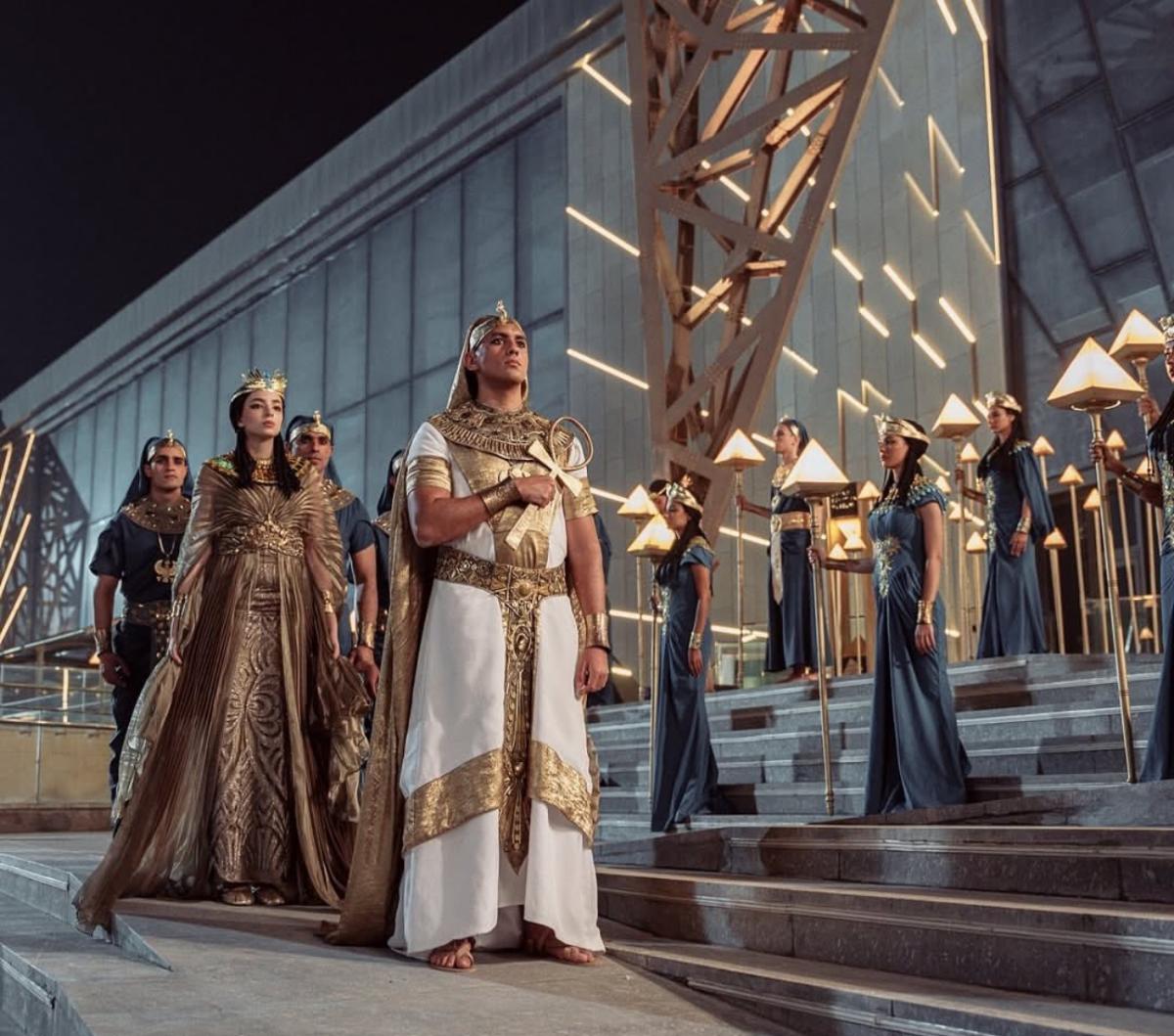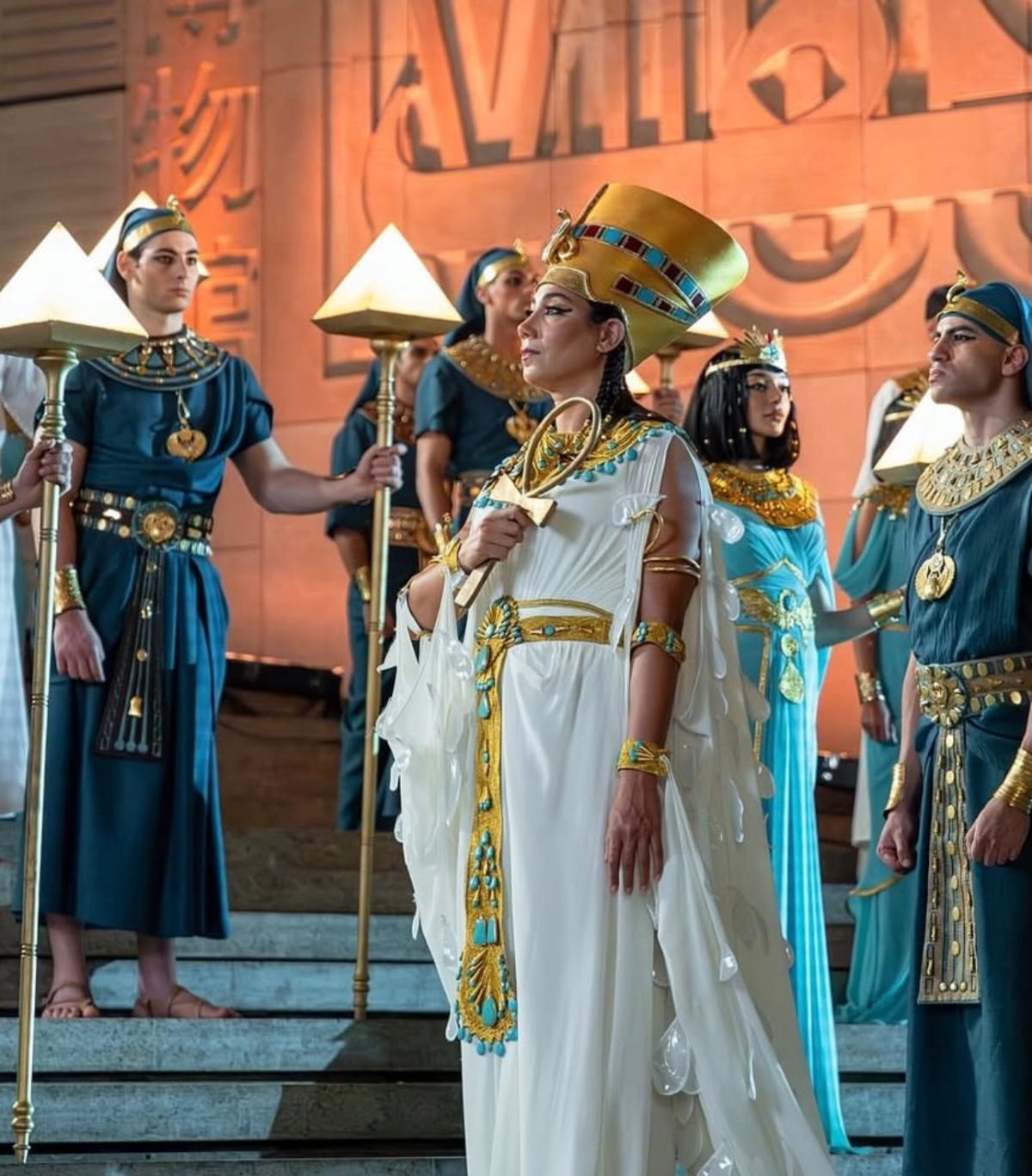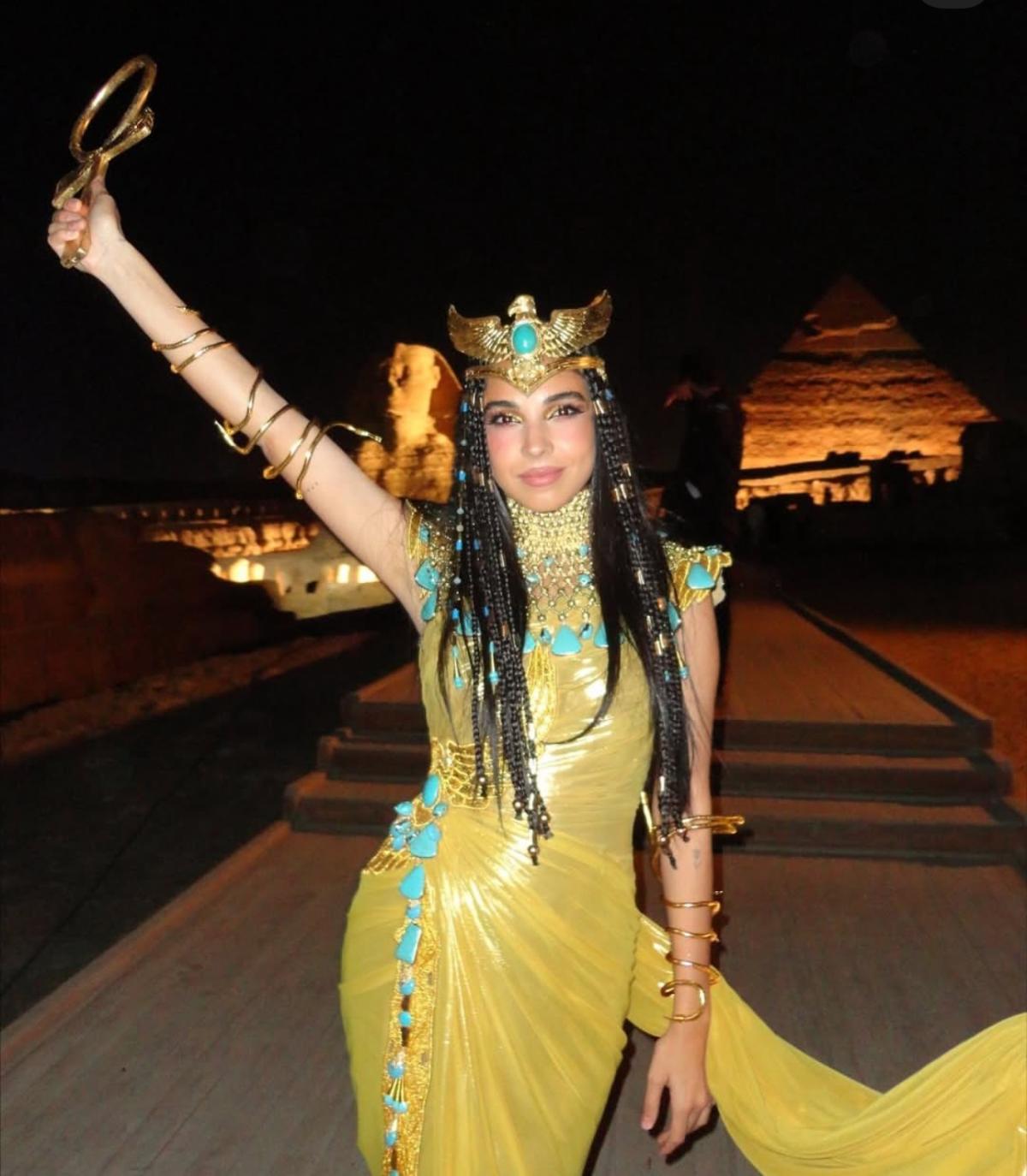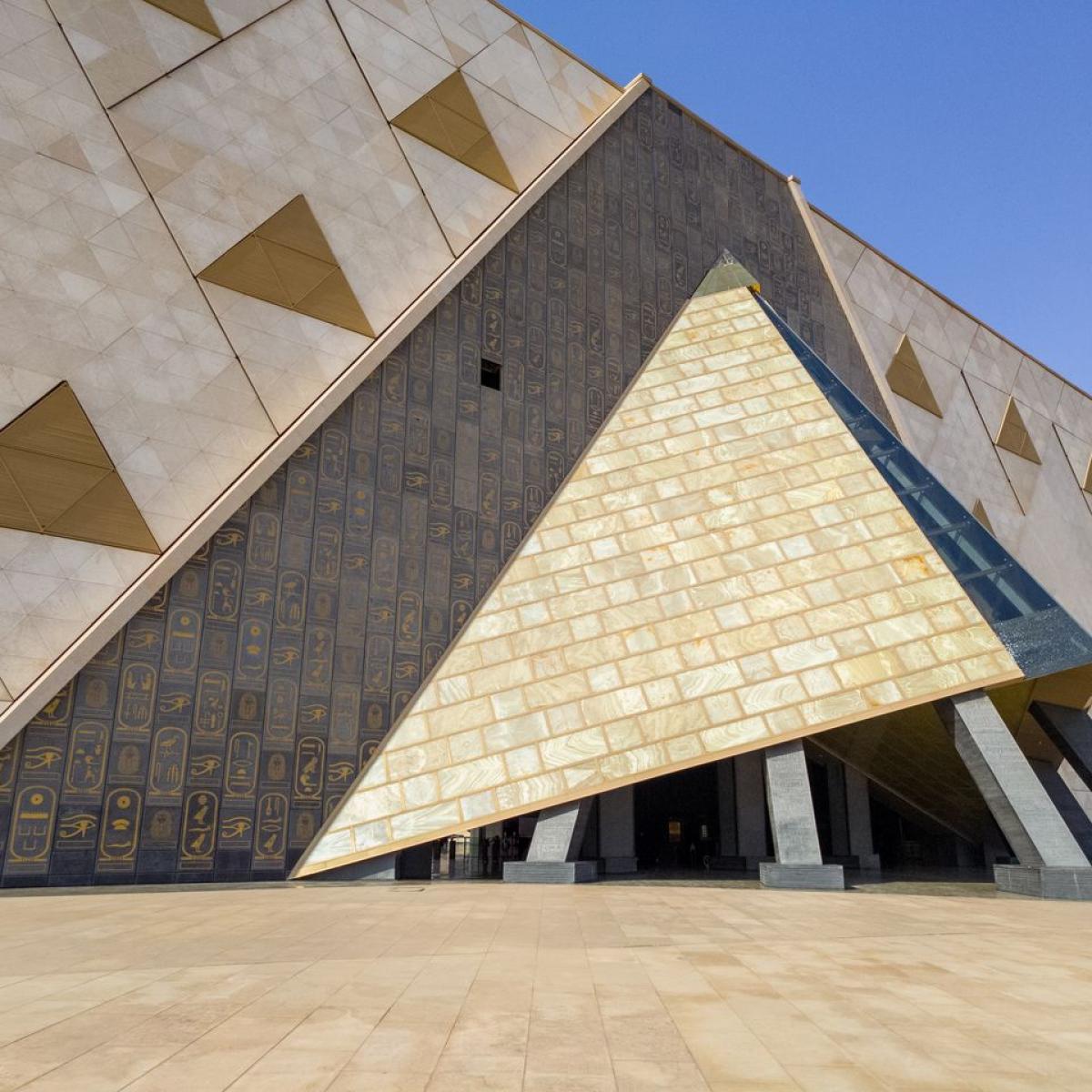





The desert has always known how to keep secrets. Beneath its golden layers of sand and timeless silence, Egypt hides stories that never age—only waiting for the right moment to be told again. Today, after years of patience, vision, and construction, the country welcomes the world with a new face and reclaims the spotlight with the most ambitious cultural project of the 21st century: The Grand Egyptian Museum (GEM) — a place where the past and the future of civilization meet, face to face.
Set between modern Cairo and the boundless expanse of the Giza Plateau, the Grand Egyptian Museum was designed so that the very first thing visitors see upon stepping out into its vast atrium are the pyramids themselves. This architectural masterpiece was conceived by the Irish firm Heneghan Peng Architects, winners of the international design competition in 2003. Two decades later—after years of engineering challenges, meticulous restorations, and pandemic delays—its doors finally opened to the world in November 2025.
Covering more than 480,000 square meters, GEM is the largest archaeological museum ever built, dedicated to a single civilization. Its façade—carved from stone and shaped as a massive triangular prism—reflects the desert sun as though the material itself were alive. Inside, space and light command reverence. This is not merely a building for exhibits; it is a temple of culture, conceived to merge the ancient with the modern spirit of the 21st century.
At the heart of the museum lies the gallery devoted to Egypt’s most iconic pharaoh—Tutankhamun. For the first time in history, over 5,000 artifacts from his tomb are gathered in one place, carefully restored and displayed exactly as they were discovered in 1922 by Howard Carter. From the golden funerary mask, gleaming like the sun itself, to miniature ceremonial boats and delicate ornaments, the collection is so rich that each object feels like a story of its own.
Modern technology allows visitors to enter the tomb through immersive virtual reconstructions, to explore the secrets of mummification, and to understand why the young pharaoh remains a symbol of eternal youth and mystery. This is not a static display; it is an emotional journey—every detail crafted to evoke the feeling of traveling back in time, yet through the lens of modern design.
GEM is far more than a repository of antiquities. It is a living space—complete with restoration laboratories, interactive halls, educational centers, and even a dedicated children’s area where archaeology becomes an adventure. Behind glass walls, visitors can watch Egyptian and international experts at work, restoring fragile treasures—a silent craftsmanship that breathes life into every artifact on display.
Among the most striking exhibits are the statue of Ramses II, welcoming guests in the grand atrium, and the solar boats of Khufu, carefully relocated from the foot of the Great Pyramid. The galleries also feature lesser-known but captivating collections—from papyri and sarcophagi to jewelry, tools, and fragments of daily life in ancient Egypt.
Perhaps most remarkable is the sense of context: the exhibition is arranged to trace the evolution of Egyptian civilization from its earliest dynasties to the Greco-Roman period, highlighting the connections between religion, science, and art. This is a museum that speaks to the modern visitor through the universal language of light, space, and design.
With the opening of the Grand Egyptian Museum, the country sends a clear message: Egypt is back—with new vision and renewed confidence. After years of instability and fluctuating tourism, the state has invested strategically in cultural tourism, infrastructure, and heritage preservation. New highways, renovated airports, and high-speed rail lines now connect Cairo with Luxor and Aswan, while the Red Sea coast continues to evolve as a luxurious yet accessible destination.
The Ministry of Tourism and Antiquities has launched programs for training young guides, digitizing historical sites, and building partnerships with global cultural institutions. The results are already visible—2025 marked a record year for tourism, with new air routes from Europe and the Middle East making Egypt more accessible than ever.
Visiting GEM is essential, but Egypt is far more than its museums. Here’s how to craft a journey that blends antiquity, adventure, and modern elegance:
1. The Giza Plateau – Just minutes from the museum, this is the classic that never fades. Go early to avoid the crowds and heat, and allow yourself a moment of silence before the Sphinx—it feels almost sacred.
2. Saqqara and Memphis – Less crowded, yet equally mesmerizing. Here stands the world’s first pyramid—the Step Pyramid of Djoser—and the birthplace of Egypt’s architectural genius.
3. Old Cairo – A tapestry of Christian, Islamic, and Jewish heritage intertwined within one neighborhood. Wander its narrow lanes and sip mint tea in one of its historic cafés.
4. Khan el-Khalili Bazaar – Not just a market, but an experience for the senses. Time slows among the scents of spices, leather, and perfumes that linger long after you’ve left.
5. Luxor and the Valley of the Kings – If time allows, take a short flight from Cairo. Standing before the tombs of the pharaohs or the temples of Karnak and Hatshepsut is a memory that never leaves you.
6. A Nile Cruise – A timeless journey reinvented in luxury. Today’s riverboats offer designer cabins, Egyptian wine tastings, and views that shift in color with every passing hour.
A new generation of Egyptians is transforming the capital into a city of creative energy. In neighborhoods like Zamalek and Garden City, art galleries, design studios, and culinary spaces boldly blend tradition with avant-garde. Evenings on rooftop terraces overlooking the Nile have become a contemporary ritual—cocktails, jazz, and conversations about the future in a city that has always been in dialogue with its past.
Egypt is experiencing a renaissance of identity. New cultural policies, international collaborations, and a growing focus on sustainable tourism are reshaping the nation’s global image. From protecting coral reefs in Sharm el-Sheikh to developing eco-conscious hotels near Luxor, the country no longer seeks only to display its past—it strives to share a vision of its future.
That is what makes traveling to Egypt today so different. It is a meeting with a civilization that is not frozen in time, but constantly reinventing itself. The Grand Egyptian Museum stands as the emblem of this spirit—architecture of glass and stone, looking toward the pyramids yet grounded in the present.
At day’s end, as the setting sun bathes the desert in shades of rose and gold, you stand on the museum’s terrace and watch the shadows of the pyramids stretch across the sands. Against this eternal landscape, the Grand Egyptian Museum feels like a natural continuation of history—a new chapter written with the same ambition that once drove the pharaohs.
Egypt has always been a place that makes you reflect on time. But now, more than ever, the country invites the world not just to observe it, but to experience it. And if the pyramids have long been symbols of eternity, then the Grand Egyptian Museum is proof that eternity can indeed begin anew.
Photos: Conde Nast Traveller, Maciej Grabowicz, Anadolu, Brandon Rosenblum, Iwan Baan; Grand Egyptian Museum.